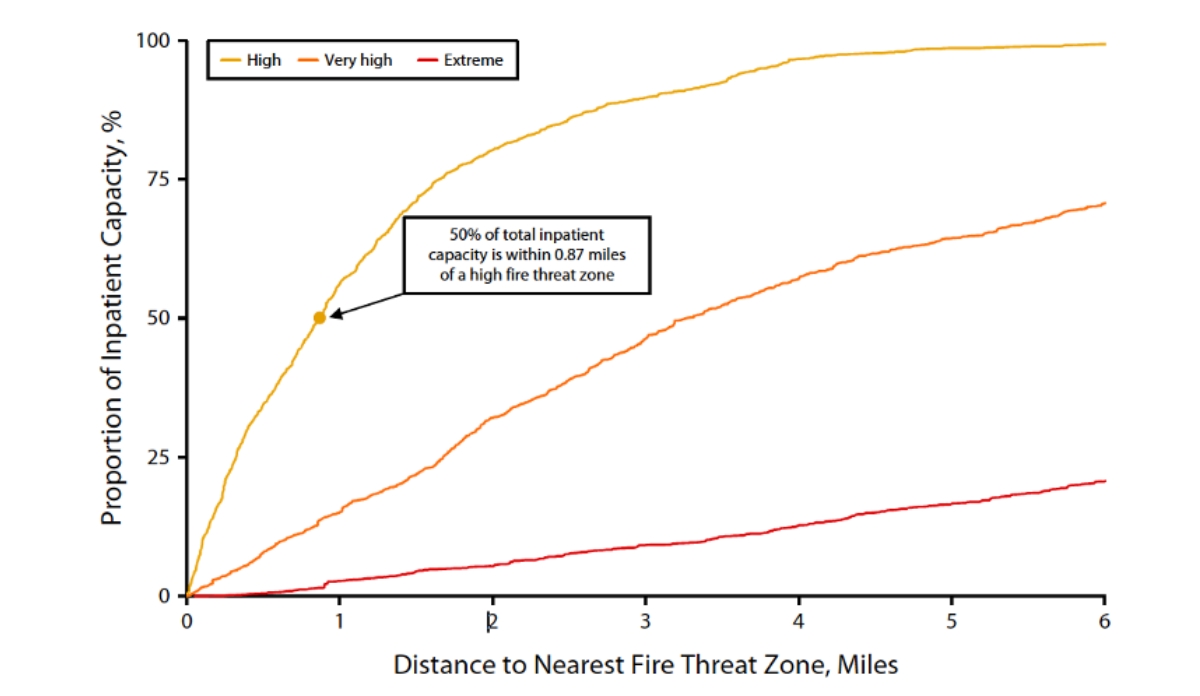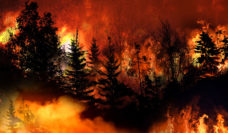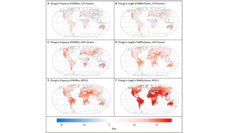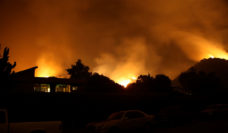The deadly firestorms in Maui earlier this month are the latest examples of a devastating pattern: wildfire season is growing longer and more severe in the western United States. In the past 20 years, California witnessed 17 out of the 20 largest fires in its history. Seven of these record-breaking wildfires took place between 2020 and 2021.
Wildfires are devastating and unpredictable. The blazes can spread quickly, leaving little time for adequate warnings. Spreading wildfires put all community members at risk, but hospitals and their patients are particularly vulnerable. Evacuating hospitalized patients is a slow and difficult task. Patients in need of intensive care, life support, and those with physical disabilities or infectious diseases require specialized equipment, trained personnel, and controlled environments to ensure their safety during evacuation.
To understand the wildfire risk to California hospitals, researcher Neil Singh Bedi and colleagues mapped the distances between inpatient beds and fire threat zones. Using 2022 data from the California Department of Forestry and Fire Protection, fire threat zones were classified as low, moderate, high, very high, or extreme based on the likelihood of damaging or difficult-to-control wildfires.
The findings are alarming. Approximately 50% of inpatient beds are located within one mile of a high fire threat zone. And 50% of inpatient beds are within 3.3 miles of a very high fire threat zone.
These hospitals and their patients are at a heightened risk of being directly affected by wildfires. In 2020, one California hospital was forced to evacuate its patients twice in two weeks as the encroaching flames of the destructive Glass Fire reached the hospital grounds. All patients and staff had to be evacuated by helicopter or ambulance to other healthcare facilities.
With rising temperatures, prolonged droughts, and altered weather patterns, climate scientists anticipate that future fire risk will continue to grow.
As more of the state is affected, the researchers urge inpatient facility leaders to create plans for both sheltering-in-place and evacuation scenarios. Plans should include identifying other hospitals for evacuation and exploring partnerships with non-traditional facilities, such as dormitories, arenas, and churches for potential evacuation sites.
If you would like to donate to support the victims of the Maui wildfires, below are three organizations offering relief:
Maui United Way: Maui Fire Disaster Relief
Hawai’i Community Foundation: Maui Strong Fund
Maui Food Bank
Databyte via Neil Singh Bedi, Caleb Dresser, Akash Yadav, Andrew Schroeder, Satchit Balsari. Wildfire Threat to Inpatient Health Care Facilities in California, 2022. American Journal of Public Health, 2023.














